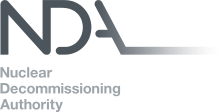Nuclear Decommissioning Authority
|
|
Better understanding of water quality monitoring
NDA has funded the development of new guidance for routine water quality monitoring programmes at nuclear sites.
The new guidance helps Site Licence Companies develop monitoring programmes that:
- have well-justified scopes
- use appropriate techniques
Both of these factors can:
- deliver reliable data to support the site restoration mission
- potentially reduce costs
Technical oversight was provided by:
- Nuclear Waste and Decommissioning Research Forum’s (NWDRF) Working sub-group on Land Quality (WGLQ)
The guidance was endorsed by:
- Nuclear Industry Group for Land Quality (NIGLQ)
Most UK nuclear-licensed sites undertake routine monitoring of groundwater and/or surface waters. Regular, long-term monitoring is often undertaken to monitor contamination, support safe management of sites, and, in some cases, as a specific regulatory requirement.
Many monitoring programmes have typically evolved over time. Their scope and scale can vary considerably between sites.
Often these monitoring programmes include a mix of operator objectives and regulator objectives. Over time, objectives behind aspects of programmes may become unclear. Programmes may start to address different priorities or introduce new monitoring techniques. This can lead to increased costs and workload without proportionate gains in monitoring objectives. Long-term monitoring programmes can also tend to continue with out-dated techniques.
NDA’s Direct Research Portfolio (DRP) funded and delivered the development of this new guidance to address these issues. DRP is NDA’s strategic R&D portfolio which can support work to inform strategy, deliver innovation and maintain and develop key technical skills on an estate-wide basis. NIGLQ recognised that a consistent approach to routine water quality monitoring could:
- assist in generating high quality monitoring data
- assist in the subsequent interpretation and assessment of data
- reduce the potential for challenge from regulators and other stakeholders
- save money by ensuring appropriate use of manpower and financial resource
Hence, the NIGLQ sought funding from the NDA’s DRP because:
- DRP provide experienced technical resource from its range of framework contractors
- the final guidance would provide benefit to the NDA-estate and wider nuclear industry, such as members of the NWDRF
Once drafted, a period of consultation with the wider land quality industry and representatives of regulators resulted in significant improvements to the guidance.
We have published the guidance as a Code of Practice:
Nuclear Industry Code of Practice for Routine Water Quality Monitoring
The guidance concentrates on aspects of water quality monitoring specific to:
- nuclear sites
- radioactive contaminants
The scope of the guidance is:
- radioactive contaminants
- topics common to both radioactive and non-radioactive contamination, for example:
- sampling point design
- hydrochemistry
- relevant hydrometric parameters
The document provides good practice guidance and generic advice, including:
- defining objectives of routine water quality monitoring
- designing the monitoring network
- designing and maintaining monitoring points
- choosing the analytical suite
- choosing the frequency and duration of monitoring
- field measurements
- sample collection
- sample care
- reporting, data management and record keeping
- data assessment
- safety, quality assurance and control
As a result of using this guidance, monitoring programmes should be:
- self-consistent
- use modern good practice techniques
- use arrangements appropriate to that site
Who is the guidance for?
The document is for:
- employees on nuclear sites
- their contractors/consultants
For field technicians and junior/new technical staff, the guidance provides:
- a better understanding of why monitoring is carried out
- the specific issues relevant to water quality monitoring faced on nuclear-licensed sites
For more experienced technical staff, the guidance:
- is a ‘quick reference guide’
- summarises key issues
- signposts relevant existing guidance, standards and codes of practice (CoPs)
|
|
||||||||||||||




